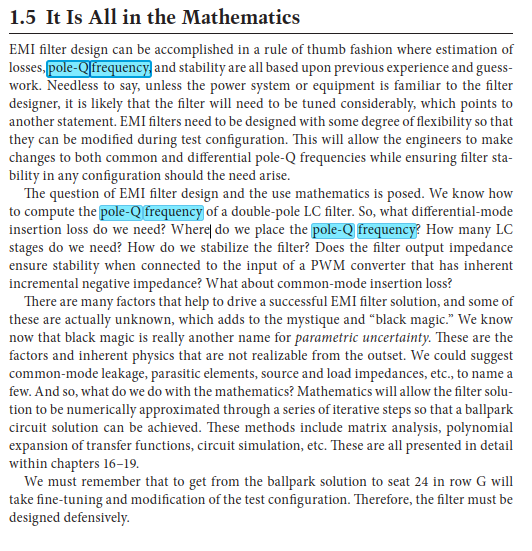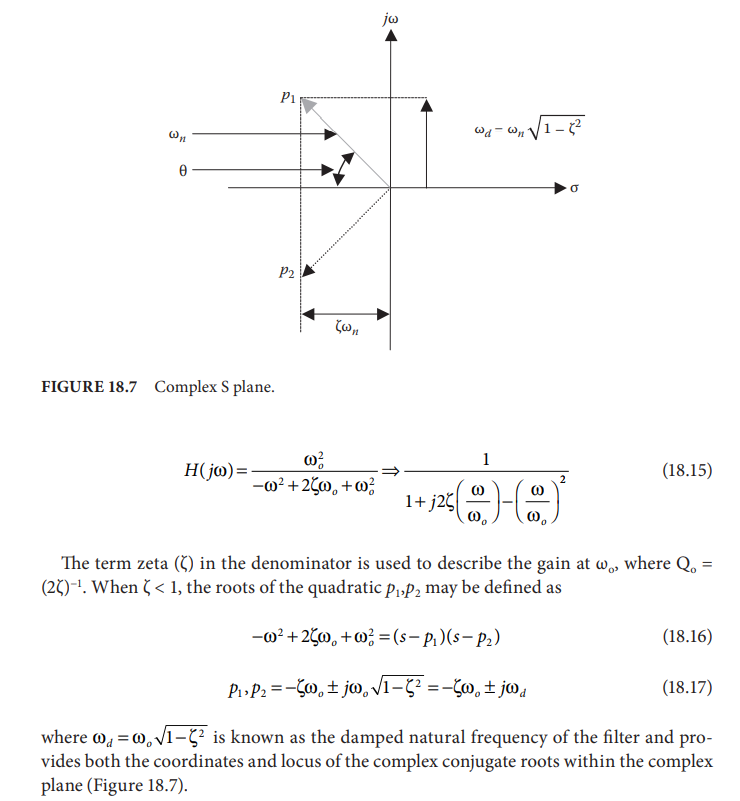The following statement is an excerpt from the book EMI filter design:
"if the filter is not optimized for characteristic impedance the filter will be prone to peaking at the points of impedance mismatch. If the EMI filter design is left unchecked, this phenomenon may lead to corresponding elevations in noise amplitude around the pole-Q frequency, causing EMC test failure"
What is the "pole-Q frequency"?
 From EMI filter design by Richard Lee Ozenbaugh, 3rd edition, page 1-4
From EMI filter design by Richard Lee Ozenbaugh, 3rd edition, page 1-4


